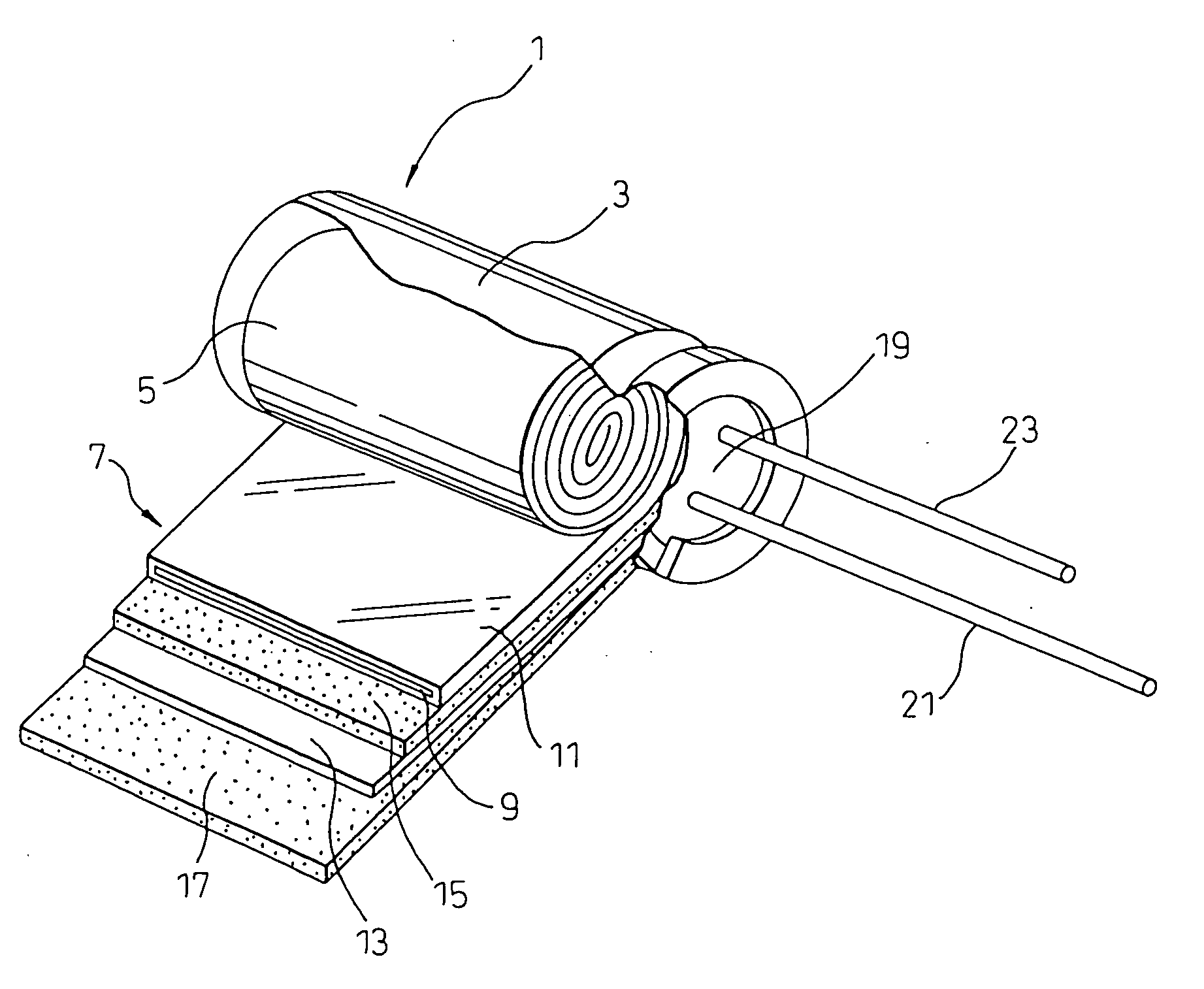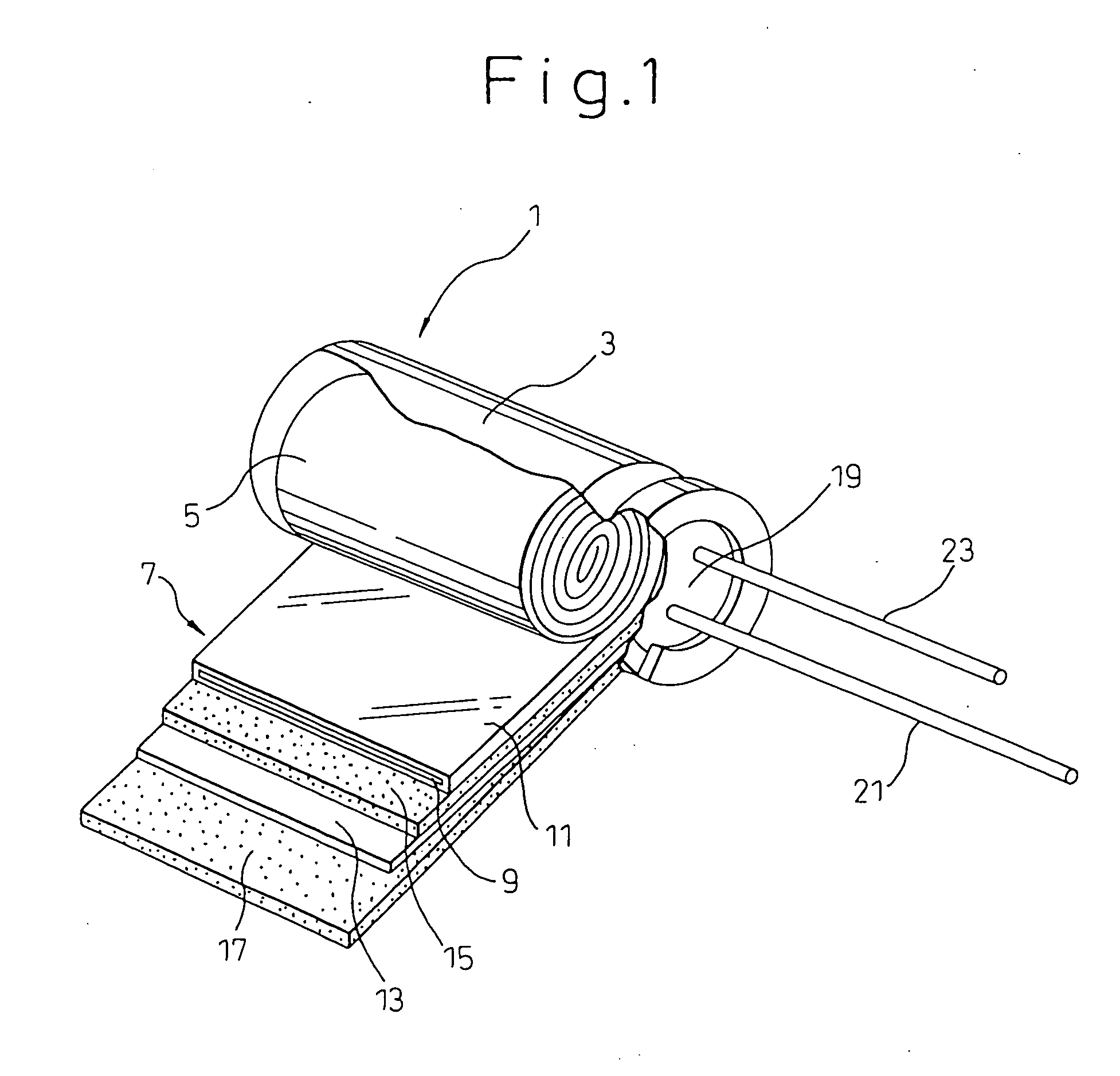Electrolytic capacitor and electrolitic solution for driving electrolytic capacitor
a technology of electrolytic capacitor and electrolyte solution, which is applied in the direction of capacitors, electrolytes/absorbents, capacitors, etc., can solve the problems of large 40° c. impedance/20° c. impedance ratio, poor low temperature stability of aluminum electrolytic capacitors, etc., to achieve the effect of increasing the surface area and controlling capacitance, reducing the etching factor, and reducing the size of electrolytic capacitors
- Summary
- Abstract
- Description
- Claims
- Application Information
AI Technical Summary
Benefits of technology
Problems solved by technology
Method used
Image
Examples
examples
[0056] The present invention will now be explained in greater detail through examples, with the understanding that these examples serve merely as illustrations of the invention and are in no way limitative.
[0057] The 30° C. resistivity values of the electrolyte solutions used in the examples were measured and are listed in the accompanying tables. The low-temperature (−40° C.) impedance and ordinary temperature (20° C.) impedance of the fabricated electrolytic capacitors were measured, and then the impedance ratio (Z ratio) as the ratio of the measured values was calculated for measurements at different frequencies (120 Hz and 100 kHz), as shown in the tables for each of the examples. In order to evaluate the usable life properties of each of the electrolytic capacitors, the initial values for the capacitance, tanδ and leakage current (values immediately after fabrication of each capacitor) and the change in those values after a high-temperature load test by standing for a prescrib...
examples 1-12
[0058] After impregnating a wound element of an electrolytic capacitor (10 WV-1000 μF) with an electrolyte solution having the composition shown in Table 1 below, it was placed in an aluminum case with the electrode drawing lead tab extending out of the case, and then the opening of the case was sealed with an elastic sealant to fabricate an electrolytic capacitor. Examples 1 to 10 were conducted to examine the effects of chelate compounds, saccharides, hydroxybenzyl alcohol, L-glutamic acid diacetate or its salt and gluconic acid and gluconic lactone. In Examples 11 and 12, there were fabricated capacitors under conditions with the compound having an unsaturated bond-containing chain electrode either coated onto the foils or adhered to the separator. The capacitors were subjected to characteristic testing, and the obtained results are summarized in Table 1 below.
examples 13-22
[0061] The procedure of Example 1 above was repeated, but in order to confirm the effects of simultaneously adding a nitro compound or nitroso compound with the chelate compounds, saccharides, hydroxybenzyl alcohol, L-glutamic acid diacetate or its salt or gluconic acid and gluconic lactone, the optional compositions added to the electrolyte solutions were varied for these examples as shown in Table 2. The test results are also summarized in Table 2.
TABLE 2SpecificZ ratioInitial valuesValues after 3000 hrs at 105° C.resistance120 Hz100 kHzLeakageLeakageAppear-Electrolyte solution30° C.[−40 / [−40 / CapacitancetanδcurrentCapacitancetanδcurrentancecomposition [wt %][Ω· cm]20° C.]20° C.][μF][%][μA][μF][%][μA](behavior)Exam-Ethylene glycol30.0201.14.610354.38.28955.62.7ple 13Water50.0Ammonium formate6.0Ammonium adipate5.0Phosphoric acid1.0Ethylenediamine-0.5tetraacetic acidNitrobenzoic acid1.0Ammonium hydrogen2.0maleateExam-Ethylene glycol40.0351.15.210345.17.99005.92.6ple 14Water40.0Ammo...
PUM
 Login to View More
Login to View More Abstract
Description
Claims
Application Information
 Login to View More
Login to View More - R&D
- Intellectual Property
- Life Sciences
- Materials
- Tech Scout
- Unparalleled Data Quality
- Higher Quality Content
- 60% Fewer Hallucinations
Browse by: Latest US Patents, China's latest patents, Technical Efficacy Thesaurus, Application Domain, Technology Topic, Popular Technical Reports.
© 2025 PatSnap. All rights reserved.Legal|Privacy policy|Modern Slavery Act Transparency Statement|Sitemap|About US| Contact US: help@patsnap.com


